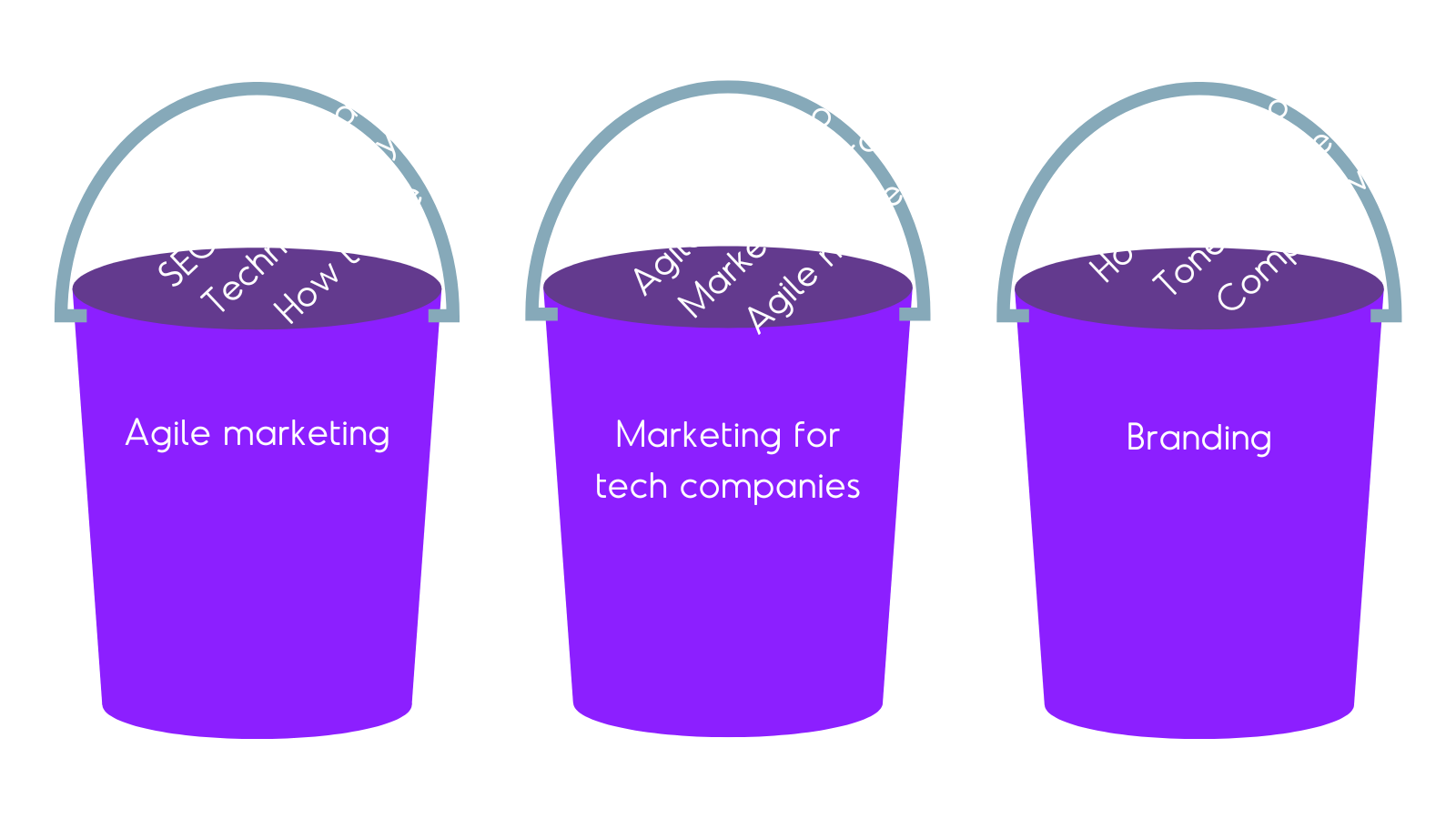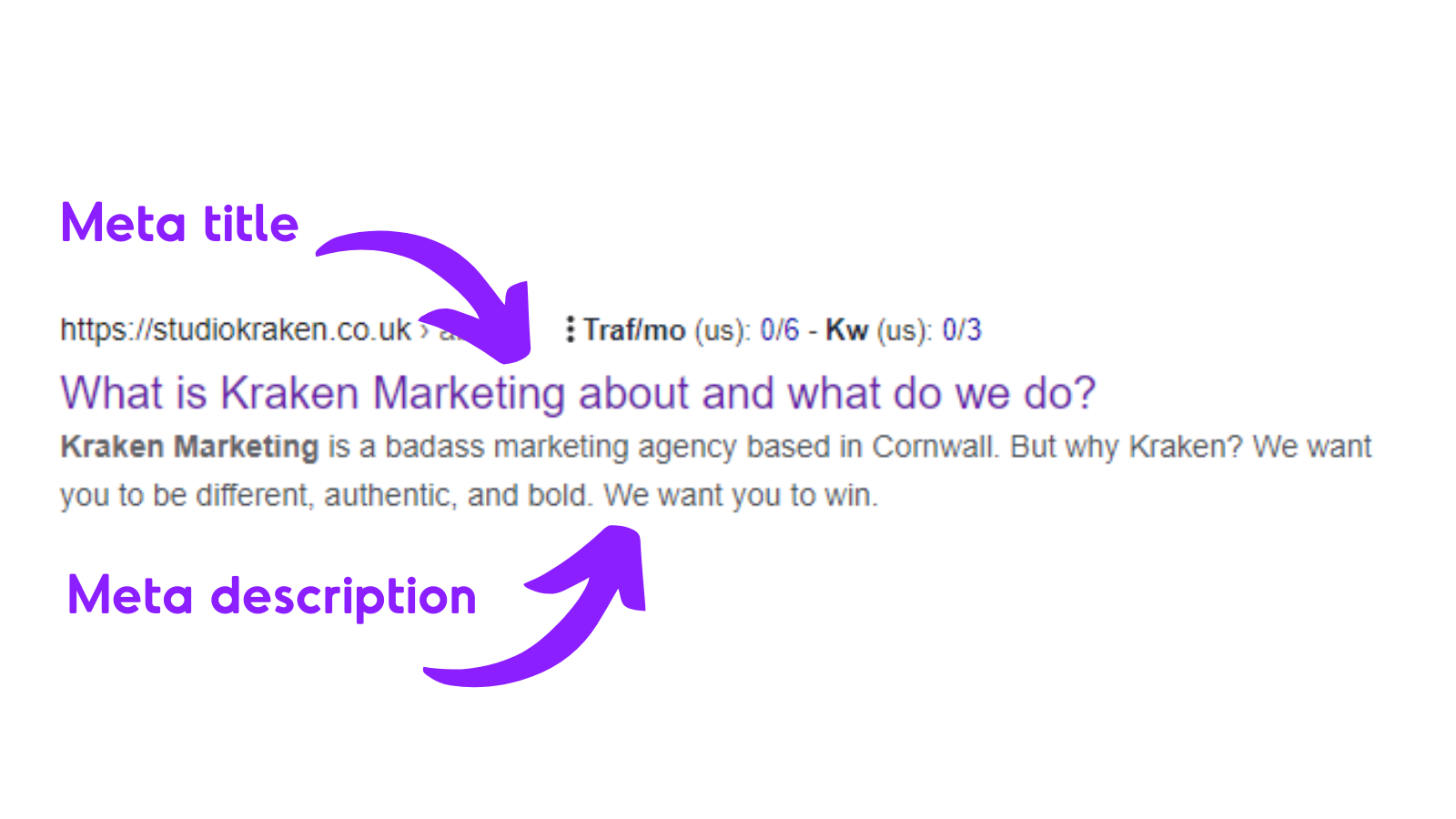
15 January 2023
Serious SEO tips for successful SMEs and startups
Article Categories:
Startups and SMEs are usually working with limited marketing budgets and small teams. Many have one-person marketing departments that are responsible for delivering the entire marketing strategy. 😱
This means you’re constantly running with MVP (Minimum Viable Product) marketing strategies, especially when it comes to your SEO. I know this because I’ve been there.
I’ve been the solo marketing person in small businesses and startups and the good news is, I’ve managed to be successful with SEO.🤘Huzzah!
That’s why I’ve put together these SEO tips, to help you be successful with your SEO! 💹
These SEO tips are by no means exhaustive – but they can really help you get results when you’re being seriously lean. And who doesn’t want that?
I also want to point out here – that SEO doesn’t deliver massive results overnight. It takes effort, consistency and hard graft! But when you get it right – it’s chefs kiss amazing.👌

Tracking
First things first, get tracking that juicy data.
Setting up Search Console, will help you measure your website’s search performance, show you the keywords people are using to find your site, and show you any technical issues.
You should also use Google Analytics to see how users are interacting with your website, what content is performing well, your bounce rates etc. By now you really should have set up GA4 ready for the imminent demise of Universal Analytics. 🥲
Adding heatmapping software (like HotJar) allows you to view user behaviour on your website, what they’re clicking on, how far they’re scrolling and more! Sexy AF!
SEO tip: even if you don’t have time to go through all the data right now – set it all up so when you do have the capacity, you have all the info!
Keywords
By researching the right keywords, you create the opportunity to rank well in search engine for the things your target audience are searching for.
This means you’ll be driving more of the right traffic to your website, maximising your chances of converting users into customers. 💰
But where the frick do you start?
First, make a list of important, relevant topics for your business – think of these as content buckets. See examples below 👇
Then fill these buckets with keywords you want to focus on – things you want to be ranking for. What are your customer personas searching for that you can provide the answer on?
SEO tip: Don’t forget to include long tail keywords – an example would be “data-driven digital marketing agency in cornwall”

Content
Now you know what keywords you want to use – all you need to do is use them in your content!
When creating content for your website – remember pages should have a minimum of 300 words. It’s also great for SEO to have some longer pieces, say 1500+ words.
But make sure it’s meaningful content and not just fluff. And ⛔ never ⛔ overstuff keywords. Remember you’re writing for humans! Not machines.
The key is to create comprehensive, authoritative evergreen content that people actually want to read.👀
Your content should always serve a purpose, and not just be aimed at bringing people to your site.
It’s worth remembering, your website isn’t ever really “done.” Adding fresh content regularly is great for your users but also for search engines. This shows them that you’re still relevant and will help your ranking. It also improves your chances of becoming an authority site.
Check out my article on how to write SEO friendly blogs that people like to read for a bit more info.
SEO tip: You don’t always need to start from scratch. You can update and refresh older articles and pages, making them more relevant. Noice!
Video and images content
Now, don’t just think of content as words – video and images can provide a lot of quality traffic to your website. Huzzah.
All images on your website should have alt tags that describe them. These are read aloud by screen readers but search engines also use these to understand the content.
You should also compress and optimise your images to help increase site speed.
Having an explainer video on your homepage is a great place to start, but you can also embed videos into articles, turn articles into videos, and get video testimonials from clients. 💜
Video can be easier to digest, and some people might prefer this to reading a long article.
Make sure to use your keyword research to inform your video strategy.
SEO tip: Make sure all video content has captions for accessibility and search engines
Meta descriptions and meta titles
These aren’t as scary as they sound.
A meta title is the page title shown in search results for your web pages.
A meta description is an HTML element that describes the content of your web page.
It is usually what’s shown below the page title on search results. Think of them as organic ad text. They’re a simple concept but crazy important!
Meta descriptions should be around 156 characters long, try to make them engaging, and they should always include your page’s focus keyword.
They also need to be relevant to the content on the page, so people know what they’re getting! It’s an opportunity to communicate the benefits of going to the page – and hey! Why not go crazy and add a CTA (Call To Action).
SEO tip: Did you know you can use emojis in your meta content? 😲They can increase CTR (Click Through Rates). Why not try them out? 👍

Link building
So there are loads of different types of links and they’re not all created equal.
But for now, let’s pay attention to internal links.
Using internal links helps keep visitors moving to other relevant content on your site, and shows search engines important content. For example, this article is about SEO so it would make sense to link our SEO services page. Wink wink. 😉😉
You also need to be encouraging links from other websites (backlinks), as this will increase your domain authority and help your site rank better in web searches.
Link building is a skill – and you want to build backlinks not bad links so the source really matters.
Here are a few things you can try to get backlinks:
- Try asking your clients to link to your site
- Search for any mentions of you online and ask the site for a link
- Find relevant articles and
- Look at HARO (Help A Reporter Out)
- Pitch stories to journalists
- Join relevant directories
- Become members of groups
- Create business social profiles and link to your website
- Publish valuable guest content on other people’s websites and link back to your site
SEO tip: Don’t describe links as read more or click here. Use keywords relating to the linked content.
The technical stuff
Mobile-first indexing means that Google now considers the mobile version of your website the primary version of your site. You need to make sure your website is performing awesomely on mobile, as this affects your overall ranking.
Your website structure is also incredibly important.
It’s a guide for search engines about what’s the most important content on your site.
It should look like a pyramid.
- Homepage
- Categories (or sections)
- Subcategories (only for larger sites)
- Individual pages or posts
You’re URLS should show each layer of the pyramid and look something like this:
https://studiokraken.co.uk/news/why-discovery-workshops-are-a-must-for-kraken-marketing-projects/
There’s a whole load more to technical SEO, and when you have the time you should do more research into it. But this should get you started.
SEO tip: Make sure your site is fast and performing well with free online tools like PageSpeed Insights, nibbler, and GTmetrix.
On-page optimisation
You also need to do on-page optimisation for all your pages to ensure they’re tip top! 😍
Here’s a quick on-page SEO checklist for you:
- Have you decided on and used a focus keyphrase for the page / article using your keyword research?
- Have you done a SERP analysis?
- Have you specified a Meta title and meta description?
- Have you used the right content hierarchy utilising keywords? H1, H2, H3 and text
- H2 tag – using other keywords?
- Is your body copy 300+ words, with natural keyword usage, and answering searchers questions?
- Have you got the correct URL structure?
- Have you used internal links to relevant content?
- Have you used outbound links to authoritative sites with relevant content?
- Have you optimised your Images with file names and alt tags?
OK – so that was a lot of info. Please don’t feel overwhelmed if this is all new for you.

The good news is, that you can just start optimising your new content as you go, and then go back and fix what’s already there.
It doesn’t have to be done overnight – you’re playing the long game here!
If you need some help doing SEO for your startup or small business – get in touch! We can totally help you out.